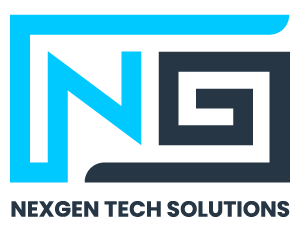AI Based Integration
AI Based Integration

Additional Services
Open and AI-ready infrastructure
A comprehensive AI portfolio
SaaS applications with embedded AI
Choice of Data Management Platforms
Why Brands Choose NexGen For AI Based Integration

Experience Led & Outcome Focused
We help brands understand the role digital can play in realizing strategic opportunities and solving real world business problems, always keeping the focus on the customer's experience and the results generated.

Proven, Rapid, Agile & Trusted Delivery Methods
Using agile methodology, always keeping you in the loop. Streamlined delivery, cost effective engagements, designed to match your goals, your timeline and your budget.

Experienced Developers
Our mobile web developers create solutions that work seamlessly across all platforms and operating systems: smartphone, tablet or laptop or running iOS, Android.

Transparent, Collaborative, Communicative
Complete project visibility and multiple open lines of communication from day one. We are available when you need us and continually updating you on your project’s status.
FAQs
Artificial Intelligence refers to the capability of a machine to imitate intelligent human behavior. Put another way, AI technologies are algorithms that attempt to mimic things that humans do. Machine Learning, on the other hand, is the science and engineering of giving computers the ability to learn without being explicitly programmed — algorithms that learn from data.
AI and Machine Learning are often discussed in conjunction with one another, but it is important to note that not all AI techniques use Machine Learning, and Machine Learning is also used for other things besides AI, such as decoding genetic sequences.
Some examples of AI technologies that are commonly used today include:
Speech Recognition: Taking audio and working out what the words spoken are.
Natural Language Understanding: Taking sequences of words and determining the intended meaning.
Computer Vision: Recognizing objects and understanding the world — to provide sensory input for control of a driverless car, for example.
Dialogue Management / Conversational AI: Ability to conduct a natural conversation with a user. Taking in the meaning conveyed by the user, thinking, and deciding what to SAY and DO next.
For one thing, it is possible to be considerably more aggressive in the application of some newer technologies specifically in the case of agent support, since there is still a human agent who can choose whether or not to use the supporting information. For example, there are new techniques applying deep learning technologies (including sequence-to-sequence learning) that can learn how to respond to a customer question from large sets of example dialogues.
The danger of applying this kind of technology to a fully automated Intelligent Assistant is that risk remains that the automated interface will provide a suboptimal or uninterpretable response that could negatively impact the individual customer experience or even the brand as a whole.
In the case of AI for agent support though, critically, you have a human in the loop alongside the AI solution. That way, the human agent can choose to approve or disapprove automated or partially automated responses. By doing so, human agents also help to continuously train and teach the Conversational AI over time.



